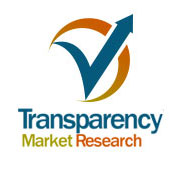Transparency Market Research has published a new report titled “Rheology Modifiers Market – Global Industry Analysis, Size, Share, Growth, Trends, and Forecast 2016 – 2024.” According to the report, the global rheology modifiers market was valued at US$4.97 Bn in 2015 and is anticipated to reach US$6.86 Bn in 2024, expanding at a CAGR of 3.7% between 2016 and 2024.
Rheology modifiers that are primarily used in the construction industry include polyacrylamide, starch ethers, polyether, and polyurethane. Addition of rheology modifiers reduces segregation, produces cohesive mixture, and enhances sag resistance properties in cement formulations and dry mortar applications. Increase in the number of construction projects, growth in population, and rise in government plans to develop infrastructure are projected to propel the construction industry in Asia Pacific. This, in turn, is likely to drive the rheology modifiers market during the forecast period.
Get FREE PDF Brochure For More Professional and Technical Insights : http://www.transparencymarketresearch.com/sample/sample.php?flag=S&rep_id=7535
Crude oil (petroleum fractions) is the basic raw material employed in the production of various types of raw materials for the synthesis of rheology modifiers. Therefore, fluctuation in prices of crude oil is estimated to be key factor for the inconsistency in prices of rheology modifiers during the forecast period. Rheology modifiers play an important role in controlling the rheology and flow properties of inks used in printing and writing purposes. Leading ink manufacturers prefer to control rheological properties of inks using resin or polymers. However, formulators need additives such as rheology modifiers on a large scale in order to enhance the overall performance of inks. This shift from print to digital media has enabled leading ink manufacturers to invest significantly in marketing of digital media rather than print media. This, in turn, is impeding the growth of the rheology modifiers market.
In terms of demand, Asia Pacific dominated the global rheology modifiers market in 2015. Demand for rheology modifiers is estimated to be high in Asia Pacific in the next few years owing to the rising usage of rheology modifiers in paints & coatings, adhesives & sealants, personal care, and construction applications in the region. Asia Pacific was closely trailed by Europe in 2015. Europe accounted for the second largest share, while North America held the third largest share of the global rheology modifiers market in 2015. Currently, the U.S. dominates the rheology modifiers market in North America. High demand for rheology modifiers in the country is ascribed to its increased usage in pharmaceuticals, construction, and paints & coatings applications. In terms of revenue, pharmaceuticals is expected to be the fastest growing application segment in North America during the forecast period.
Key manufacturers of rheology modifiers include Akzo Nobel N.V., Ashland, Arkema S.A., Croda International plc, BASF SE, Clariant, The Dow Chemical Company, Eastman Chemical Company, Evonik Industries AG, FCC Inc., The Euclid Chemical Company, The MÜNZING Group, Hangzhou Jingyi Chemical Co., Ltd., Mallard Creek Polymers, Inc., The Lubrizol Corporation, PPG Industries, Inc., SNF Holding Company, and San Nopco Limited.
About Us
Transparency Market Research (TMR) is a global market intelligence company providing business information reports and services. The company’s exclusive blend of quantitative forecasting and trend analysis provides forward-looking insight for thousands of decision makers. TMR’s experienced team of analysts, researchers, and consultants use proprietary data sources and various tools and techniques to gather and analyze information.
TMR’s data repository is continuously updated and revised by a team of research experts so that it always reflects the latest trends and information. With extensive research and analysis capabilities, Transparency Market Research employs rigorous primary and secondary research techniques to develop distinctive data sets and research material for business reports.

